Renewable energy, especially the solar generation industry, is developing very rapidly and has already successfully turned into one of the most powerful spheres in the economy of the United States, China, the European Union and India. According to the calculations of scientists, by 2020, the total capacity of all SES will be more than 600 gigawatts. As for Ukraine, in 2017, the pace of development of solar energy has successfully increased and reached the highest levels – in half a year, 132 megawatts of new solar power stations were connected to the general grid, compared to 99 megawatts, which were counted for the whole previous year, and according to the results of the 2- half of the installed capacity can increase by another 360 megawatts.
It should be note that most of all new capacities were represent by large ground SES. In addition, the market for commercial and private roof stations is developing at a much slower rate. Despite the fact that fields of thousands of solar panels are actively increasing in different regions of Ukraine, houses with their own solar generators on the roofs are also something new.
What was the prerequisite for the development and a greater influx of investment in the active development of domestic solar energy in Ukraine?
 It can be safely say that the era of stations “beyond the law” has already passed, which operate on dubious tariff plans and conditions. With the help of some changes made to the legislative base, it was possible successfully regulate the issue of the “green” tariff for SES. Moreover, to date, the provision of fully transparent market conditions for private homes and commercial enterprises has greatly simplified this problem. For example, if you make investments through currency, then when you receive a fixed rate for electricity, it is also fix in currency.
It can be safely say that the era of stations “beyond the law” has already passed, which operate on dubious tariff plans and conditions. With the help of some changes made to the legislative base, it was possible successfully regulate the issue of the “green” tariff for SES. Moreover, to date, the provision of fully transparent market conditions for private homes and commercial enterprises has greatly simplified this problem. For example, if you make investments through currency, then when you receive a fixed rate for electricity, it is also fix in currency.
At the same time, active growth began immediately after 2014, when everyone watched the decline in the real estate market. At that time, worldwide prices for the purchase of solar power plants decreased, which provided more choice and opportunities for customers. Thus, after investing in the purchase of solar power plants, as well as connecting to the “green” tariff, you can get about 18-20% per year, which means that the project can fully pay off after 4-5 years.
It should be noted that most of the solar energy industry is firmly associated with the future, so realizing such projects, people are even more approached to modern technologies, which is one more reason for this growing popularity of SES. The imposed era of buying and selling is increasingly becoming outdated every day, and the benefits of renewable energy are becoming more and more demanded.
Leading investment associations invest their money in land-based solar power plants, dividing the construction into stages. One part of investors attracts investment flows from the West, and the other – uses its own finances. The obligatory condition for the implementation of such projects remains the availability of land resources and the required capacity of connection to the power system.
At the same time, the sphere of roof SES develops in considerably smaller stages. The aggregate capacity of all these facilities in Ukraine can be measure in tens of megawatts. At the same time, the main problem remains that for today there is a catastrophically lacking professional planned design of SES for rooftop placement, as well as proper and high-quality project management. Despite the fact, that many building owners, even without a green tariff, it is much more appropriate to use solar electricity to cover their own needs.
What problems can arise in the construction of roof solar stations?
 Often, users are not aware of the entire amount of work and their complexity in the implementation of installation projects for roof solar panels. In addition, very often they encounter intermediaries who do not have personal design offices. At the same time, this segment is not interesting for large prosperous companies, which are direct to the design and construction of large ground stations.
Often, users are not aware of the entire amount of work and their complexity in the implementation of installation projects for roof solar panels. In addition, very often they encounter intermediaries who do not have personal design offices. At the same time, this segment is not interesting for large prosperous companies, which are direct to the design and construction of large ground stations.
The main differences between roof SES and ground
If we consider the construction of roof SES by investors, their main advantage is a higher green tariff, as well as the need for less money. This is due to the lack of costs for supporting metal structures. It eliminates the need to search for land for the construction of infrastructure for SES.
Installing roof solar panels, you can significantly reduce the cost of air conditioning and cooling of the building in the summer. At the same time providing for itself a reliable and uninterrupted power supply and increasing the quality of power supply.
The connection of roof stations according to the current green tariff has become a certain driver of a significant increase in the responsibility of the population for the quality of electricity. Most owners of power plants also install special network monitoring systems that provide information on the quality of electricity supply. Thanks to this, it became possible to quickly identify problems and eliminate them before any possible malfunctions occurred.
As for terrestrial SES, during their construction, most of the money is invest in the network equipment and lines that are need to connect to the energy system itself, and not to modernize the electricity networks of settlements. Consumers remain remote from these stations, resulting in increased power losses during transmission and distribution.
 In the past 2 years, about 90% of the combined energy production in European countries is “green”, that is, renewable energy sources are used to generate energy. Leading positions in the rating of newly built capacities for 2016-2017 years are occupied by solar and wind stations.
In the past 2 years, about 90% of the combined energy production in European countries is “green”, that is, renewable energy sources are used to generate energy. Leading positions in the rating of newly built capacities for 2016-2017 years are occupied by solar and wind stations. The Energy Atlas of Europe also states that the integration of energy with the transport and heating sector and the application of the demand regulation mechanism can lead to an active increase in the share of renewable energy sources. The availability of technologies for accumulation and transformation of electricity, supplemented by electronic process control systems, provides an opportunity to quickly solve the issue of eliminating fossil fuel resources from all spheres.
The Energy Atlas of Europe also states that the integration of energy with the transport and heating sector and the application of the demand regulation mechanism can lead to an active increase in the share of renewable energy sources. The availability of technologies for accumulation and transformation of electricity, supplemented by electronic process control systems, provides an opportunity to quickly solve the issue of eliminating fossil fuel resources from all spheres.



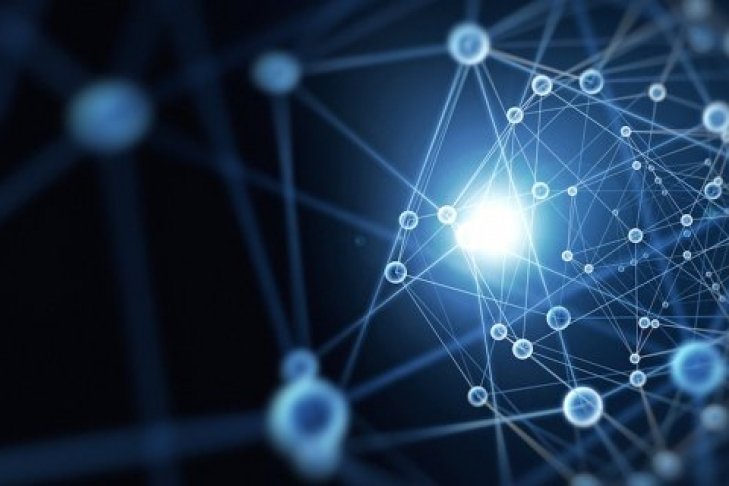






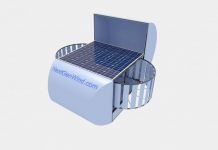
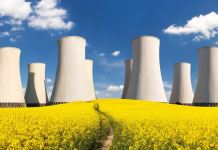


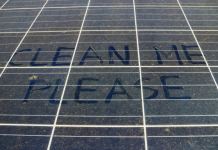

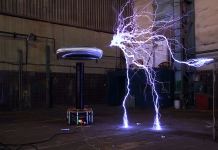


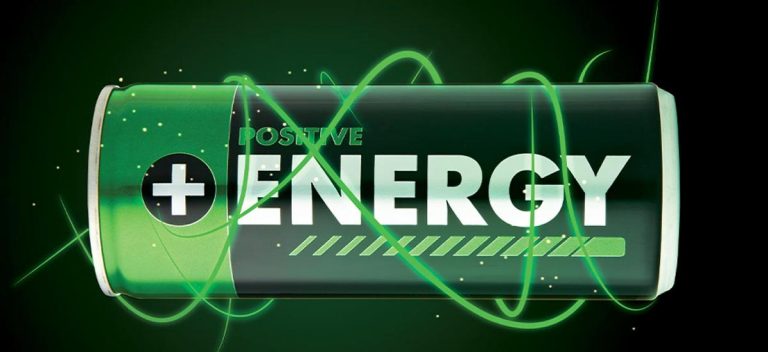
 This way of saving energy allows you to extend the working hours or serve as heating the buildings. In addition, it is possible to generate electricity by using salt at night, when heliostats do not function.
This way of saving energy allows you to extend the working hours or serve as heating the buildings. In addition, it is possible to generate electricity by using salt at night, when heliostats do not function. This technology is actively implemented by the company “Ice Energy” from California. The firm introduces ice technology in the Australian market. Active sun makes it possible to produce large amounts of electricity from the sun, and thermal storage facilities minimize energy costs for cooling the housing in the region.
This technology is actively implemented by the company “Ice Energy” from California. The firm introduces ice technology in the Australian market. Active sun makes it possible to produce large amounts of electricity from the sun, and thermal storage facilities minimize energy costs for cooling the housing in the region.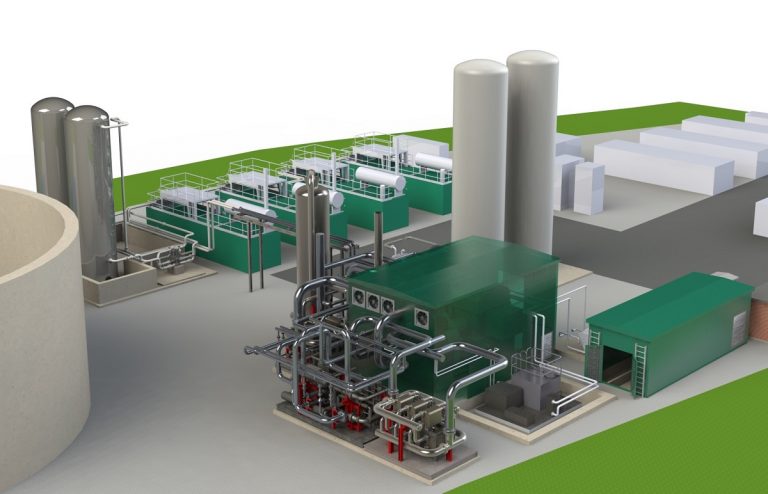
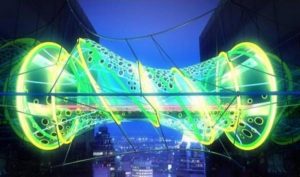 Scientists from the UK have solved this problem with the help of liquefied air. The development of the new project involved employees of the company Highview Power Storage. The essence of their invention is that the surplus generated electricity is use to reduce the air temperature to -190 degrees Celsius. This gives an energy carrier in a concentrated form, which in scientific circles is call cryogen. Liquefied air is stored with a special tank and a pressure of one bar.
Scientists from the UK have solved this problem with the help of liquefied air. The development of the new project involved employees of the company Highview Power Storage. The essence of their invention is that the surplus generated electricity is use to reduce the air temperature to -190 degrees Celsius. This gives an energy carrier in a concentrated form, which in scientific circles is call cryogen. Liquefied air is stored with a special tank and a pressure of one bar.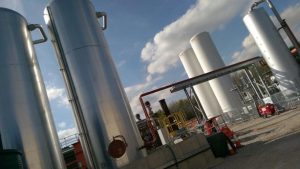 The British cryogenic power storage has passed all the necessary tests and is already putting into operation. For example, not far from Manchester, a five-megawatt cryogenic installation is operating successfully today. In addition, the storage tanks were install at a power plant generating electricity from biomass in the town of Slough.
The British cryogenic power storage has passed all the necessary tests and is already putting into operation. For example, not far from Manchester, a five-megawatt cryogenic installation is operating successfully today. In addition, the storage tanks were install at a power plant generating electricity from biomass in the town of Slough.
 After the completion of all construction works, the Nikopol Solar Power Plant will be list as the most powerful station in our country and will rightfully be award the title of one of the largest SES of the world, having entered the top three of the largest stations in Europe.
After the completion of all construction works, the Nikopol Solar Power Plant will be list as the most powerful station in our country and will rightfully be award the title of one of the largest SES of the world, having entered the top three of the largest stations in Europe.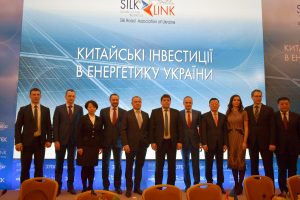 DTEK Director General noted that this project is one of the largest and will attract serious investments in alternative energy of our country. The construction of the Nikopol SES together with the Chinese partners is capable of becoming a positive example of successful investments in the Ukrainian “green” energy sector. This can arouse the interest of other foreign investors. The state energy strategy has quite ambitious goals: to increase the order of five gigawatts of the capacities of alternative energy for two years (until 2020), to reduce the deficit of energy resources, to reduce the amount of СО2 falling into the atmosphere by 40 percent until 2035.
DTEK Director General noted that this project is one of the largest and will attract serious investments in alternative energy of our country. The construction of the Nikopol SES together with the Chinese partners is capable of becoming a positive example of successful investments in the Ukrainian “green” energy sector. This can arouse the interest of other foreign investors. The state energy strategy has quite ambitious goals: to increase the order of five gigawatts of the capacities of alternative energy for two years (until 2020), to reduce the deficit of energy resources, to reduce the amount of СО2 falling into the atmosphere by 40 percent until 2035.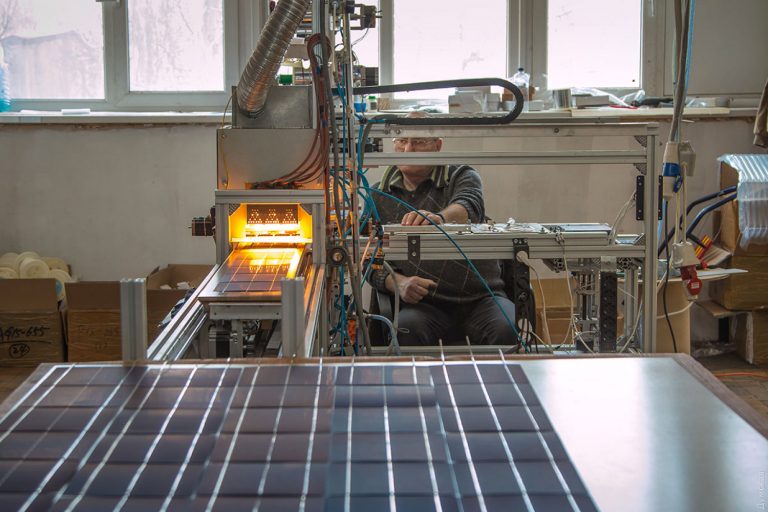
 Chief Engineer of the company-producer Viktor Lazarenko notes that the market analysis took 3.5 years. In addition, about 50 kg of photo-electronic transducers were damage. According to Mr. Lazarenko, members of their team attended various exhibitions of this direction, in the role of potential buyers went to foreign industries. The first pilot party was solder with its own hands. For the creation of a soldering machine, a half-cetera of FEPs was broken.
Chief Engineer of the company-producer Viktor Lazarenko notes that the market analysis took 3.5 years. In addition, about 50 kg of photo-electronic transducers were damage. According to Mr. Lazarenko, members of their team attended various exhibitions of this direction, in the role of potential buyers went to foreign industries. The first pilot party was solder with its own hands. For the creation of a soldering machine, a half-cetera of FEPs was broken.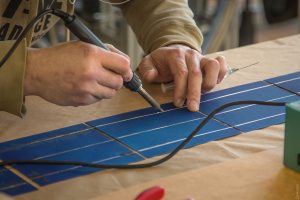 Victor Lazarenko said that the company had set the retail price lower than that offered by Chinese manufacturers. However, the fight against wholesale purchases is unrealistic at this time. The company plans to organize its own production of FEPs in order to eliminate dependence on foreign suppliers.
Victor Lazarenko said that the company had set the retail price lower than that offered by Chinese manufacturers. However, the fight against wholesale purchases is unrealistic at this time. The company plans to organize its own production of FEPs in order to eliminate dependence on foreign suppliers.

 The current legislation stipulates that the money received by the owner of a home SES from the sale of electricity be subject to taxation on general grounds. The income tax for individuals is 18 percent. In addition, a military charge of 1.5 percent is also paid. As a result, 19.5 percent is obtain.
The current legislation stipulates that the money received by the owner of a home SES from the sale of electricity be subject to taxation on general grounds. The income tax for individuals is 18 percent. In addition, a military charge of 1.5 percent is also paid. As a result, 19.5 percent is obtain.
 Representatives of our country also presented the Strategy, after which the Minister noted that the world’s current conditions are a challenge and, at the same time, an opportunity for Ukraine. Changing the direction of activity is able to build new principles of economic development of the state, which will provide competitiveness. The economy should be reoriented to energy-efficient technologies and alternative energy sources. This will allow gradually abandoning the use of fossil fuel resources.
Representatives of our country also presented the Strategy, after which the Minister noted that the world’s current conditions are a challenge and, at the same time, an opportunity for Ukraine. Changing the direction of activity is able to build new principles of economic development of the state, which will provide competitiveness. The economy should be reoriented to energy-efficient technologies and alternative energy sources. This will allow gradually abandoning the use of fossil fuel resources. An international climate treaty (195 participating countries) was signed in Paris in 2016. This agreement was designed to strengthen compliance with the terms of the United Nations Framework Convention.
An international climate treaty (195 participating countries) was signed in Paris in 2016. This agreement was designed to strengthen compliance with the terms of the United Nations Framework Convention.
 A group of scientists from Alta Devices (parts of Hanergy) recently reported that in a number of studies it became possible to create a module with the highest efficiency and conductivity indicators. This development at this stage has become a world record holder due to its characteristics. The main advantage of the innovative solar module is that it is single-section. This feature allows you significantly reduce its size.
A group of scientists from Alta Devices (parts of Hanergy) recently reported that in a number of studies it became possible to create a module with the highest efficiency and conductivity indicators. This development at this stage has become a world record holder due to its characteristics. The main advantage of the innovative solar module is that it is single-section. This feature allows you significantly reduce its size. The innovative discovery of Alta Devices has a conduction efficiency of twice that of traditional solar panels used in the industrial sector. However, the size of the new module is much smaller. The creators of innovation for this purpose used a special method of building up a microscopic layer of gallium arsenide. This layer is located on top of a single crystal of this substance.
The innovative discovery of Alta Devices has a conduction efficiency of twice that of traditional solar panels used in the industrial sector. However, the size of the new module is much smaller. The creators of innovation for this purpose used a special method of building up a microscopic layer of gallium arsenide. This layer is located on top of a single crystal of this substance.
 It can be safely say that the era of stations “beyond the law” has already passed, which operate on dubious tariff plans and conditions. With the help of some changes made to the legislative base, it was possible successfully regulate the issue of the “green” tariff for SES. Moreover, to date, the provision of fully transparent market conditions for private homes and commercial enterprises has greatly simplified this problem. For example, if you make investments through currency, then when you receive a fixed rate for electricity, it is also fix in currency.
It can be safely say that the era of stations “beyond the law” has already passed, which operate on dubious tariff plans and conditions. With the help of some changes made to the legislative base, it was possible successfully regulate the issue of the “green” tariff for SES. Moreover, to date, the provision of fully transparent market conditions for private homes and commercial enterprises has greatly simplified this problem. For example, if you make investments through currency, then when you receive a fixed rate for electricity, it is also fix in currency. Often, users are not aware of the entire amount of work and their complexity in the implementation of installation projects for roof solar panels. In addition, very often they encounter intermediaries who do not have personal design offices. At the same time, this segment is not interesting for large prosperous companies, which are direct to the design and construction of large ground stations.
Often, users are not aware of the entire amount of work and their complexity in the implementation of installation projects for roof solar panels. In addition, very often they encounter intermediaries who do not have personal design offices. At the same time, this segment is not interesting for large prosperous companies, which are direct to the design and construction of large ground stations.
 A team from the architectural company Dmytro Aranchii Architects worked on this project. The Bureau developed the project at the request of the owner of the Trakhtemirov Landscape Park in Grigorivka.
A team from the architectural company Dmytro Aranchii Architects worked on this project. The Bureau developed the project at the request of the owner of the Trakhtemirov Landscape Park in Grigorivka. It should be noted that the project plan includes 5 villas, the total square of each of them will be about 200-250 meters square. Each building will be oriented eastwards. On the territory of the buildings, there will be open-air pools, and in the buildings, themselves will be equipped with panoramic windows. As a view from the villa will be the river Dnipro and its landscapes, including picturesque ravines. Such a concept will reduce the volume of earthworks.
It should be noted that the project plan includes 5 villas, the total square of each of them will be about 200-250 meters square. Each building will be oriented eastwards. On the territory of the buildings, there will be open-air pools, and in the buildings, themselves will be equipped with panoramic windows. As a view from the villa will be the river Dnipro and its landscapes, including picturesque ravines. Such a concept will reduce the volume of earthworks.


